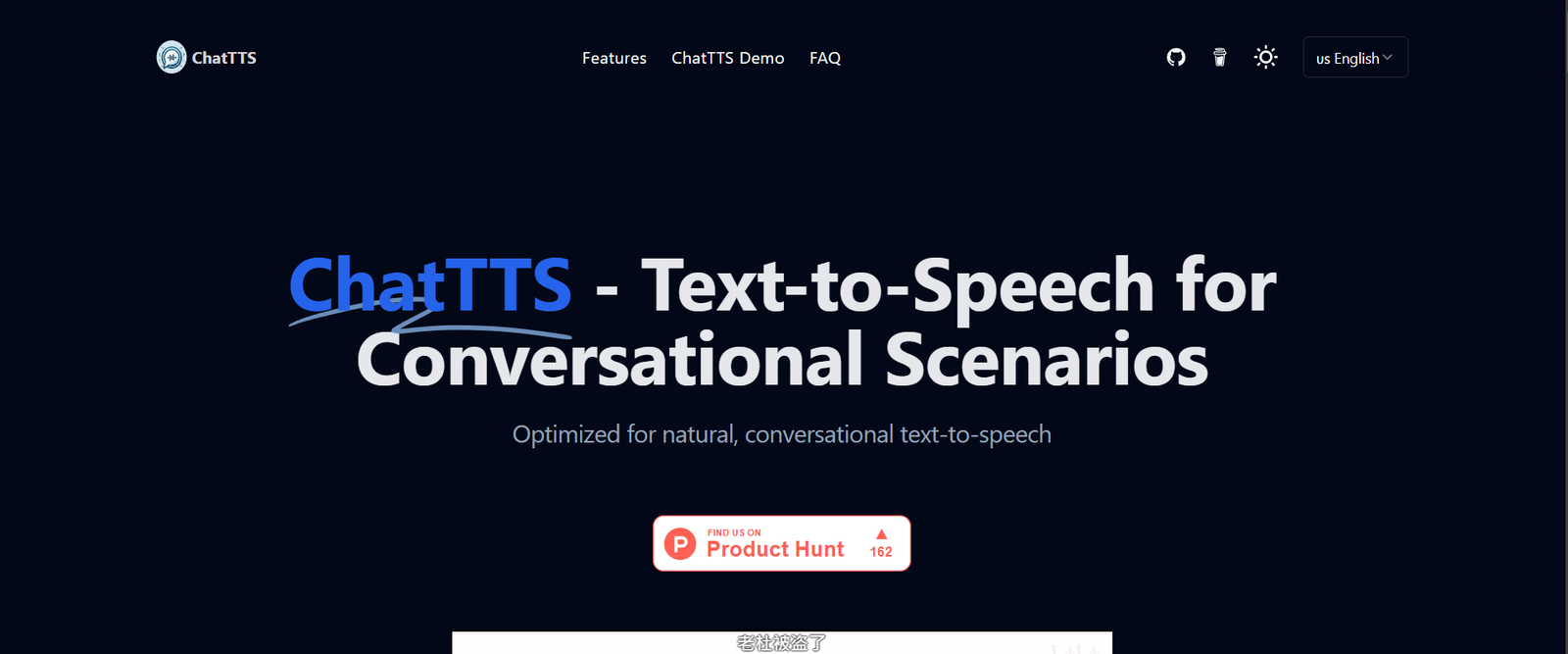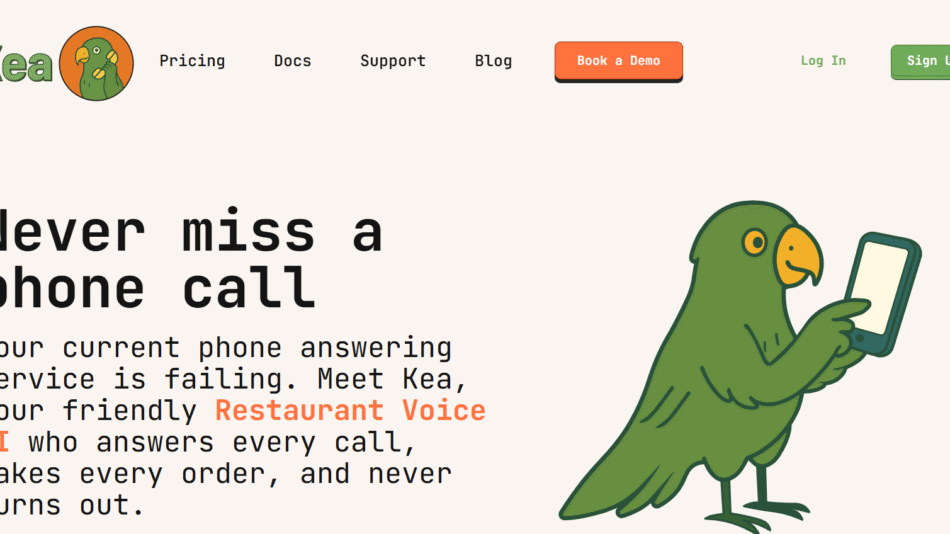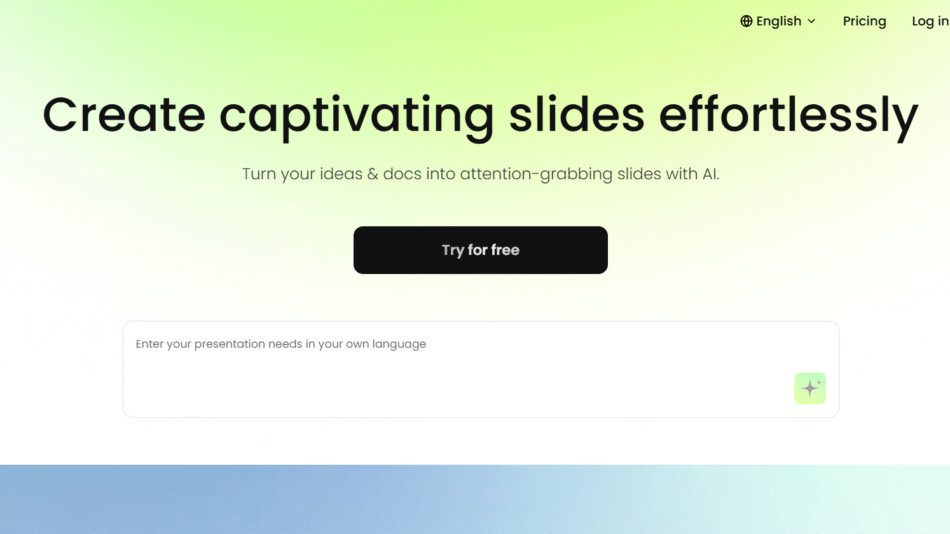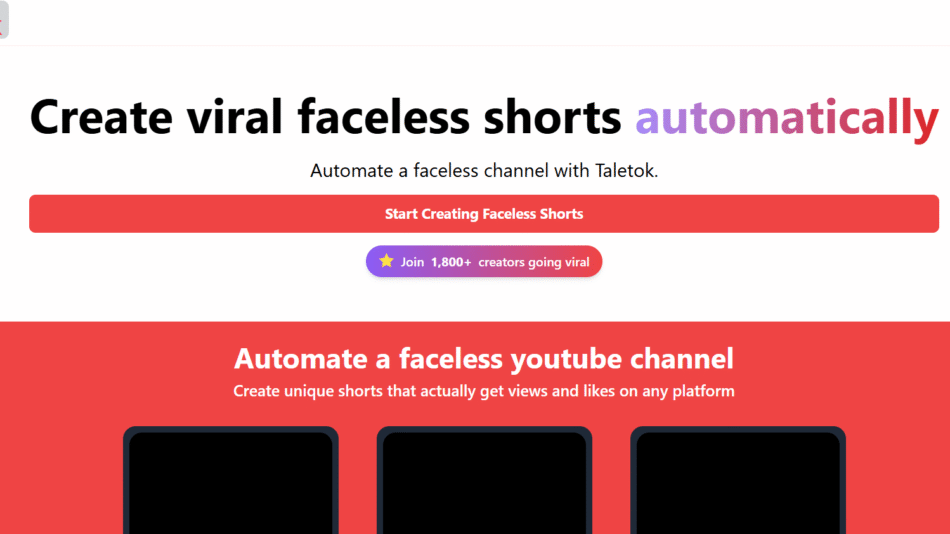ChatTTS is a voice generation model designed for conversational scenarios. It’s tailored for tasks handled by large language models (LLMs), such as AI assistants and conversational audio. Trained with a substantial dataset in both Chinese and English, it provides high-quality and natural speech synthesis. This article delves into its features, how it works, use cases, pricing, strengths, drawbacks, comparison with other tools, customer reviews, and a final conclusion.
Features
- Multi-language Support: Supports both Chinese and English, broadening its usability.
- Large Data Training: Trained on approximately 100,000 hours of data, ensuring high-quality voice synthesis.
- Dialog Task Compatibility: Optimized for dialogue tasks, enhancing natural interactions in applications.
- Open Source Plans: Plans to open source a base model, promoting further research and development.
- Control and Security: Includes watermarks and integrates with LLMs to ensure safety and reliability.
- Ease of Use: Simple text input generates corresponding voice files, making it user-friendly.
How It Works
Using ChatTTS involves downloading the code from GitHub, installing dependencies, and using Python scripts to generate speech from text. Here’s a basic workflow:
- Download from GitHub: Clone the repository.
- Install Dependencies: Use pip to install required packages.
- Initialize ChatTTS: Load pre-trained models.
- Prepare Your Text: Define the text for conversion.
- Generate Speech: Use the infer method to create speech from text.
- Play the Audio: Use IPython’s Audio class to play the audio.
Use Cases
- AI Assistants: Enhances conversational abilities of AI assistants.
- Educational Content: Converts educational materials to speech.
- Video Introductions: Generates voiceovers for video content.
- Training Content: Converts training materials into engaging audio formats.
Pricing
ChatTTS is open-source, meaning there are no direct costs for using it. However, users may incur expenses related to computational resources needed to run the model effectively.
Strengths
- High-Quality Synthesis: Produces natural-sounding speech.
- Versatility: Suitable for a wide range of applications.
- Open Source: Promotes further development and customization.
Drawbacks
- Resource Intensive: Requires significant computational power for real-time speech generation.
- Language Limitation: Currently supports only Chinese and English, limiting its usability for other languages.
Comparison with Other Tools
ChatTTS stands out due to its open-source nature and optimization for dialogue tasks. Unlike some commercial solutions, it offers more flexibility for customization and integration into various applications.
Customer Reviews and Testimonials
Users have praised ChatTTS for its high-quality speech synthesis and ease of integration. The open-source community has shown enthusiasm for its potential, especially in research and development contexts.
Conclusion
ChatTTS is a powerful text-to-speech tool tailored for conversational scenarios. With its high-quality synthesis, multi-language support, and open-source model, it offers a versatile solution for various applications. While it requires significant computational resources, its benefits make it a valuable tool for developers and researchers alike.















